Case studies
Industries
Resources
TikTok Collection
NEW
Table of Contents
Did you know that 89% of customers have returned an online purchase within last three years? ECommerce returns suck, but, unfortunately, returns are a major part of running an eCommerce business.
But, there is a way to reduce return rates – and you don’t even have to do much of the work! Sound too good to be true? It’s not. User Generated Content can reduce return rates for you with just a little extra work up front.
This post will talk about how to use visual UGC to reduce eCommerce return rates and how to get more customers to give you content. Sounds good? Let’s get to it!
Forget UGC for a moment. First, we need to understand why people return products in the first place. There are many reasons, but the most common are:
These are some of the most common reasons for returns. But do you know the single biggest reason for eCommerce returns? The item didn’t fit.
Of course, this only applies to you if you sell apparel of some kind, which I think can be applicable to many of our readers. So, how does visual UGC help solve these common return issues – particularly item fit?
User Generated Content is so important to online retailers because as much as 82% of consumers say that reviews have convinced them to make a purchase. That includes reviews to see how the apparel fits. Let me give you an example from a friend of mine.
Tallie is big into yoga and wanted to invest in a really good pair of yoga leggings. According to her, there are a lot of things to consider when it comes to leggings: you want them to be snug, but not so tight that you feel constricted.
After comparing a few brands, she found a pair that she really liked: the Up For Anything tights from Athleta. She liked that the eCommerce store categorised the sizing for different kinds of bodies, as she’s a tall girl and has been burnt before buying pants that cut off way before they should.

But Tallie was still worried about getting the right size. Small sounded too small, and she didn’t want to end up with a sagging pair if she went for the mediums, especially when she would be investing so much. Would they in fact be ‘up for anything’ like the product title suggests??
Luckily, Athleta includes customer reviews on their website – a perfect way to learn more about product fit. Scrolling, she found this review that helped her immensely.

Because she too felt like she was between sizes, she took the advice of this customer and went for the smaller size. And she’s happy to report that they fit perfectly!
Related Reading: eCommerce Technology Trends in Fashion
This review swayed Tallie because it gave her genuine advice on how to make a choice on size, based on a real experience. Plus, Athleta really makes their customers feel confident in trusting the advice by certifying that the reviewer is a Verified Purchaser! Additionally, one look at their Instagram account, and you already feel confident in purchasing from this brand. Not only do they post UGC…
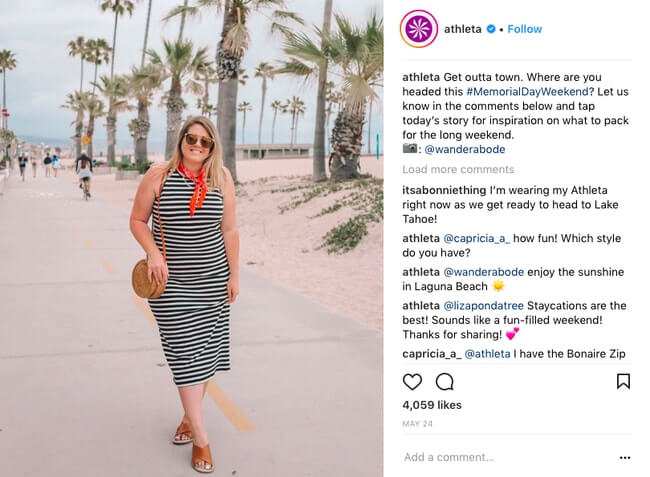
…which makes customers feel like they can trust that their products are of good quality, but they also respond directly to inquiries on social media.
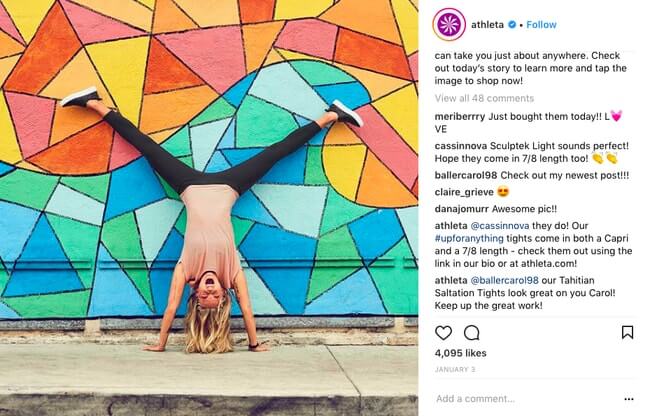
These are the exact leggings that Tallie is interested in purchasing. So how great is it to see that the Athleta brand is interested in answering questions about fit directly on their post about them?
Now if only these photos were integrated directly into their website, instead of Tallie having to go check out Instagram separately (something that’s possible with the help of Flowbox!)
As you can see, Tallie is a part of that 82 percent who take reviews/customer experience into consideration when purchasing products. And I have to admit that I am too! This is because user reviews are typically unbiased and accurate, and paint a better picture of the quality of a product based on real use. UGC reduces eCommerce returns because it helps customers buy the correct product (in the correct size) to begin with.
Let’s look at another way that UGC can help alleviate eCommerce returns. You know when you order a product online and it just … isn’t what you expected? For example, beauty products.
Buying beauty products is always a gamble but especially when you do it online, i.e. can’t smell or touch the product. But when you have UGC, your customers can take the experience from someone who has already bought and tried the product.
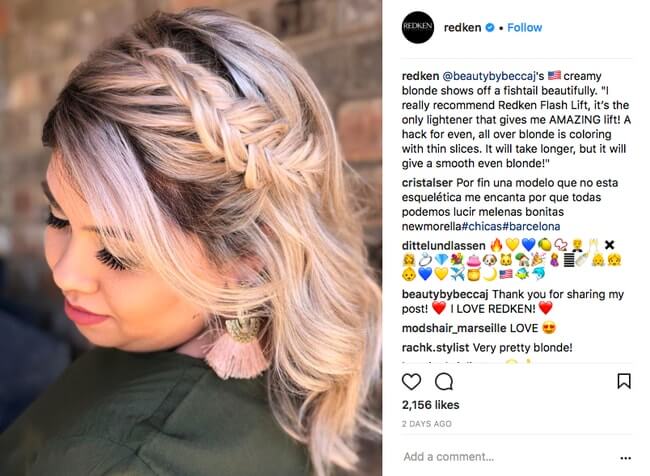
When Redken not only shares the post of an adoring follower but includes their review of the product directly onto the UGC post, followers can trust that the information they are getting is accurate and not specifically designed by the brand to get you to buy their hair products.
Here, it’s not Redken telling you why their product works, it’s Becca J. And, since Becca J. isn’t a member of the marketing team, she has no reason to tell your customers anything but the truth – that the Redken Flash Lift actually gives her an AMAZING lift!
Now customers know exactly the effect they can look for from the product, meaning more expectations being met from the start and less eCommerce returns in the future.
Plus, it’s always helpful to get a nice shout-out from the original poster herself. Note Becca’s comment “I LOVE REDKEN” directly on the post – now that’s UGC magic in action.
UGC can’t do much for an incorrect shipment or if the product is no longer needed by the customer, but there is one more key way that customer photos can help reduce eCommerce returns.
Product photos don’t always encapsulate everything about a product. And it’s such a shame for a customer to order something from your eCommerce store and be surprised that something wasn’t as originally described on your site.
But, with UGC, other customers have the opportunity to experience your products and then share if there was something that didn’t quite match.
For example, a pair of skinny jeans on the Levi’s website.
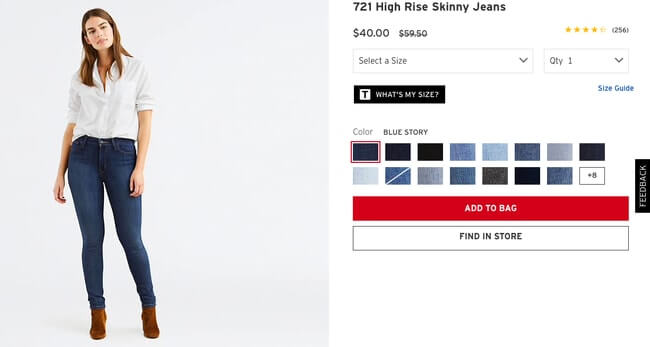
These jeans look perfect for a work setting where you can be a little more casual – while keeping a level of professionalism, of course. Levi’s also includes customer reviews on their website! This one below paints a much clearer picture than this product page.

While this woman was still happy with the jeans despite the surprise hems, that doesn’t mean all women will be. What if someone wanted to wear these to work and the new hems immediately changed how professional they really look? Perhaps, had she known, she might have bought a different pair instead of returning these ones as soon as she opens the box.
This is also a learning process for Levi’s. With this customer review, they can go back into their product description and adjust accordingly! Meaning fewer eCommerce returns in the future.
The more you give your customer the opportunity to have a voice, the more you’ll see your eCommerce store improve.
It’s easy to understand how user reviews can help us pick the right size shirt. But, what about User Generated images, like those on Instagram? How can they help reduce return rates?
It’s simple, really: high-quality product photos drive sales. Here’s an example from Meller.
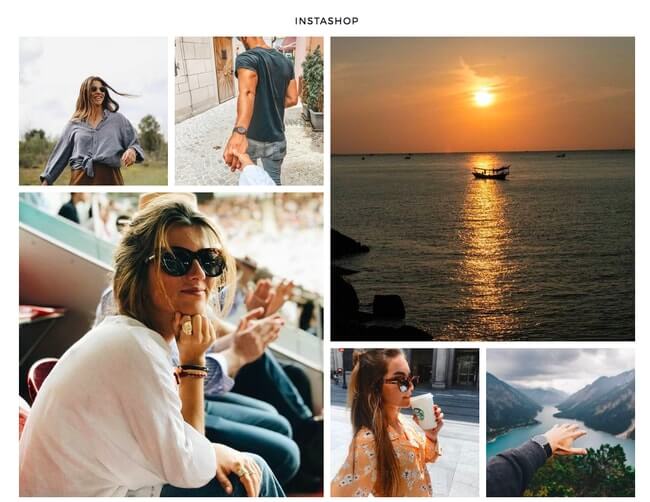
With User Generated photos, your customers get to see tons of high-quality product photography on different body types and from different people. All this UGC also provides social proof for your brand and leverages people’s pack mentality.
In essence: Visual UGC reduces return rates by helping people choose the right product before they buy.
Now, let’s talk how to get more UGC.
Curious about how UGC can transform your eCommerce results including reducing eCommerce returns? Get your demo now!
Getting a ton of User Generated photos and reviews can seem impossible when you’re just starting out. However, it can be as simple as asking for a review or starting a User Generated Content campaign.
Let me break it down for you.
Think back to a time when you left a review of a product or a company. What motivated you to take action?
Chances are, it was one of two scenarios:
The first scenario doesn’t require any action on the seller’s part – you left it on your own will.
The second, however, required them to reach out to you and ask. Otherwise, you probably never would have left a review. Here’s an example of how Amazon does this:

The fact of the matter is…
People tend to talk more about negative experiences than positive ones.
But that doesn’t mean that they won’t talk about positive experiences, they just may need a little encouragement.
In essence: Prompt your users to give a review. Send them an email, reach out to them on social media, or call them and ask.
Reviews are amazing, but what about getting users to share photos of themselves wearing your brand or using your product?
Think about it this way: Smartphone users take
According to video editing app Magisto, iOS and Android owners take an average of 150 new photos per month. That amounts to five photos a day!
The bottom line is this: Users are already taking and sharing photos. You just need to get them to take pictures while using your products and tag them with your hashtag. Here’s a User Generated Content example from watch brand Cluse!

How can you do that? Here’s a 3-step process:
Step 1: Do an audit to find your current UGC (or Use a Tool Like Flowbox!)
If you haven’t been tracking it, there’s a good chance some of your customers already posted images of your products without you knowing.
To find them:
Understanding what kinds of photos people are already taking will help you with the next step, which is…
Step 2: Create a User Generated Content Marketing Campaign
Hosting a campaign and giving away products to random winners is the first step in getting loads of UGC. People love associating themselves with good brands (and getting free stuff).
Step 3: Engage with your customers.
Be sure to respond to their comments. Also, don’t be afraid to comment on their photos, repost them on your social media accounts, and randomly give them free gifts. They don’t have to be expensive, either.
For example, Buffer sent me a sticker, which I absolutely loved. And it makes me more connected to the brand. It’s basic psychology really!
This is a concept called the commitment and consistency bias. Basically, if a person makes a small commitment to your cause or brand, they are more likely to make a bigger commitment down the road.
Here’s an example from Robert Cialdini who writes about this theory in his book Influence: The Psychology of Persuasion: if you ask people in the neighbourhood to put a sign in their yard, they’re more likely to accept if they’ve previously been asked to put a sticker in their window and accepted.
Buffer took a similar approach. I put the sticker on my laptop and am now more likely to purchase their software because of the commitment and consistency bias.

(Yes, for those of you who are fans, that is a Legend of Zelda heart in the top left.)
Once you’ve built some momentum, keep it going! Engaged fans are hard to come by, so you should nurture those relationships. For a more in depth guide on amassing customer content, checkout this article on encouraging customers to post photos about your brand.
Visual UGC can drastically cut down on the number of returns your eCommerce website gets.
Customer photos and reviews help other visitors decide which product and size is best for their body style before they make the purchase, which lowers the chance they’ll receive the wrong size and return the product.
UGC isn’t hard to get, either. Once you have a decent following, putting on a campaign is fairly straight-forward and easy. People love to be a part of a community!
How have you used UGC? Have you noticed a drop in eCommerce returns since implementing these methods? Let us know in the comments below!